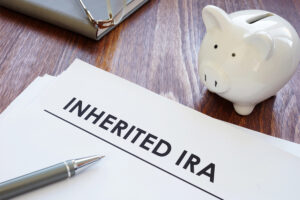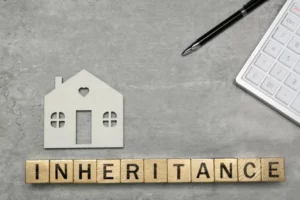How does a trust work? Knowing the answer to this question is important when considering the future of assets after a trust creator passes away. Trusts are legal arrangements designed to manage and hold assets for beneficiaries, abiding by the instructions of the grantor.
Upon the death of the person who established the trust, the trustee assumes responsibility for distributing assets and managing accounts in accordance with the trust document. This process can affect real estate, investment accounts, cash holdings, and self-directed IRAs contained within the trust.
The Job of the Trustee
The trustee manages the trust after the grantor’s death. They oversee asset allocation, handle distributions to beneficiaries, and maintain records of all transactions.
A professional trustee can execute dependable trust and investment management services that maintain compliance with legal and tax requirements. Trustees interpret the trust agreement to follow the grantor’s intentions accurately.
Choosing an experienced trustee is important for managing complex assets such as real estate, self-directed IRAs, or multiple investment accounts held within a Nevada asset protection trust.
Distribution of Assets
A primary consideration after death is the distribution of trust assets. The trustee follows the terms set out in the trust agreement to allocate funds among beneficiaries. Distributions may occur immediately or over a period, depending on instructions from the grantor.
Certain trusts also include provisions for income-producing assets, like rental properties or investments, which generate ongoing returns for beneficiaries. Knowing how a trust fund works helps beneficiaries identify their entitlements and the responsibilities of the trustee during the transfer process.
Taxes and Legal Compliance
Trusts may carry tax implications that arise when the grantor passes away. Trustees calculate any applicable estate taxes, file returns, and report income generated by trust assets.
Assets like self-directed IRAs may have special tax treatment, and distributions from retirement accounts must comply with IRS rules. Consulting professionals who specialize in how a trust works and trust administration helps prevent mistakes and maintain tax compliance.
Trustees may coordinate with accountants and legal advisors to manage filings efficiently and avoid penalties.
Handling Investment Accounts
Trusts often include a number of investments, from stocks and bonds to self-directed accounts and retirement funds. Trustees continue management through reliable trust and investment management services, tracking performance and making adjustments if allowed by the trust.
For self-directed IRAs, custodians may play a part in transferring account ownership to beneficiaries or managing distributions according to IRS rules. This structured approach protects the assets while honoring the grantor’s intentions for growth and security.
Real Estate Within a Trust
Real estate held in a trust requires careful handling after the grantor’s death. Trustees manage properties by collecting rent, paying taxes, and maintaining insurance. Distribution can include transferring ownership directly to beneficiaries or liquidating properties to divide proceeds.
Trustees often rely on Nevada asset protection trust structures to protect real estate from claims or liabilities while maintaining a clear title. Professional oversight guarantees compliance with the trust agreement and avoids conflicts among beneficiaries.
What Are Beneficiary Rights?
Beneficiaries have legal rights to trust assets based on the grantor’s instructions. Knowing what a trust fund is and how it works helps them realize how distributions are calculated and when they may receive assets.
Some trusts allow discretionary distributions, giving the trustee authority to determine timing and amounts. Beneficiaries may also receive guidance on managing inherited investments or retirement accounts, making sure that wealth is preserved and distributed responsibly.
Special Considerations for Self-Directed IRAs
Self-directed IRAs within a trust require attention to IRS regulations. Trustees and custodians manage accounts to comply with rules governing retirement distributions. Beneficiaries may have options for rolling over funds into personal IRAs or taking distributions based on age and account type.
Knowing how a trust fund works for retirement accounts allows heirs to make good decisions while maintaining tax advantages and respecting the grantor’s original objectives.
Closing the Trust
After assets are distributed and accounts are managed according to the trust, the trustee formally closes the trust. Documentation is submitted to the appropriate authorities, final taxes are paid, and records of all transactions are maintained.
A well-executed trust transfer reflects the grantor’s wishes, protects beneficiaries, and demonstrates adherence to legal and financial obligations.
Professional custodians and trust managers are instrumental in this process, seeing to it that assets, including self-directed IRAs, are transferred appropriately and in compliance with the law.
Nevada Trust Company and Trust Administration
Nevada Trust Company helps clients understand how a trust works and manage the transfer of assets after a grantor’s death. Our team handles trust administration, retirement accounts, and investment management with precision and transparency.
We offer reliable trust and investment management services and use Nevada asset protection trust structures to protect assets from creditor claims while executing distributions according to the grantor’s wishes.
Our approach focuses on clarity, compliance, and personalized guidance. Beneficiaries can rely on our expertise to manage investments, transfer ownership, and follow all legal and tax requirements.
If you have questions about trust administration or how assets are handled after death, reach out to Nevada Trust Company today to learn how we can support you through this important process.





